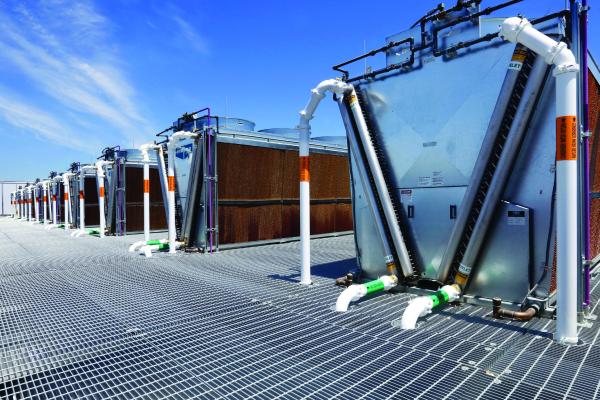Technology
This article will explore the Cooling Technologies Institute (CTI) Standard 201 (STD-201) Thermal Certification This article will explore the Cooling Technology Institute (CTI) Standard 201 (STD-201) Thermal Certification Program, share perspective from leading cooling tower manufacturers, and cover other existing and evolving CTI test codes, standards and certifications. This article will also emphasize the investment and bandwidth contributed to CTI by cooling tower manufacturers for the benefit of the industry and its end users.
The Sterling Heights facility, producing jet engines for the U.S. Army, has undergone extensive overhauls and re-tooling in the last decade. In 2010, Stellantis announced it would invest nearly $850 million in a new state-of-the-art paint shop at the SHAP Site, as well as the installation of new machinery, tooling and material-handling equipment. The following year, the company added another $165 million to the investment to build a one million-square-foot body shop.
[ Read Full Story ]
In June 1920, Willis Haviland Carrier prepared a memo that described a novel machine and refrigerant that might significantly advance the art and science of air conditioning.
Already celebrated for his 1911 “Rational Psychrometric Formulae,” Carrier imagined a “centrifugal chiller” and new refrigerant that would not only enhance process cooling in factories around the world, but reliably and affordably deliver “comfort air” to the public in theaters, stores, restaurants, sports venues, ships, hospitals and office buildings.
[ Read Full Story ]
The electrification of heating presents a significant opportunity to achieve decarbonization goals by reducing or eliminating the use of fossil fuels in traditional building systems such as boilers. The current geopolitical scenario has caused commodity prices to quickly rise and forced businesses, cities and countries to rethink their future dependance on fossil fuels and accelerate the conversion to sustainable alternatives.
[ Read Full Story ]
The 2022 AHR Expo co-sponsored by ASHRAE and AHRI was held Jan. 31 – Feb. 2, at the Las Vegas Convention Center. A total of 1,573 exhibitors (281 international) spread out over 440,000 square-feet, and 80 free sessions in the Education Program drew more than 30,000 attendees to the event. Common trends discussed amongst exhibitors focused on energy efficiency, operational reliability, connectivity and new chiller refrigerant transitions spurred by approaching regulatory transition dates in the AIM Act enacted by US Congress in late 2020.
[ Read Full Story ]
Like many universities across America, The University of Cincinnati had a major challenge having to operate aging central utility plants with older technology, reduced efficiencies and capacities, with chilled water equipment at the end of its service life. Even so, UC needed to maintain plant operations under diverse load conditions, including critical hospital utility demands that are currently expanding and in daily periods subject to energy tariff.
[ Read Full Story ]
Free cooling can take two different forms: air-side economizers that directly exchange cool outdoor air with the building or water-side economizers that use outdoor air to cool the chilled water used to cool the building. This article focuses on water-side economization in particular using two different methods: stand-alone dry coolers and air-cooled chillers with integrated free cooling coils.
[ Read Full Story ]
The EXPO & Conference focuses on “Optimizing On-site Utilities Powering Automation.” Experts from all over the world convened to discuss compressed air, pneumatics, motors and drives, vacuum, aeration blower and chiller/cooling and water treatment systems.
Held November 2-4, 2021, this 3rd installment of the event continued to provide continuing education, certification and networking opportunities to equipment sales engineers, engineering firm and manufacturing plant personnel.
[ Read Full Story ]
Röchling required a new comprehensive cooling system for their facility. The forward thinking management elected to pursue a system that was not only reliable and cost effective, but would incorporate industry leading technology for efficiency and built-in designs for redundancy. Their facility required both a cooling tower system and a chiller system. Below are the design features of each of these Thermal Care systems, and the benefits of some of the unique features are explained.
[ Read Full Story ]
Water-cooled chiller plants have three major components that consume electricity: the chiller, the condenser and evaporator pumps, and the cooling tower fan. The chiller consumes the highest amount of total plant room energy. In certain applications, the energy consumption of a chiller is very significant.
[ Read Full Story ]
Our simplified business model is to melt plastic and cool it back into the form we want – and cooling water makes this happen. We need to optimize chilled water temperature and flow to ensure that our production machines make consistent finished products. In molding application, we cool the plastic through conduction and convection directly. Blown film is different in that cooling-water cools the air and then an air handler cools the plastic.
[ Read Full Story ]

